
Why Compare Shopify and Amazon?
Diving into the world of e-commerce, the choice between platforms like Shopify and Amazon can feel like standing at a crossroads. Each path promises its own set of rewards and challenges, but how do you choose which journey to embark on? Having navigated the waters of both giants, I’ve gathered a trove of insights and experiences that I’m eager to share with fellow entrepreneurs and dreamers.
My venture into online selling was spurred by the allure of turning passion into profit. The journey has been nothing short of an adventure, filled with lessons learned, successes celebrated, and, yes, a few hurdles along the way. From the independence offered by Shopify to the vast ocean of customers accessible through Amazon, each platform has its unique appeal and potential pitfalls.
This isn’t just about comparing features or pricing models. It’s about understanding what it truly means to sell on these platforms and how they align with different business goals and lifestyles. Whether you’re inspired by the possibility of earning in your sleep through passive income streams, or you’re driven by the challenge of scaling a business to reach milestones like making $10K a year selling photos online, this guide is designed to illuminate the path ahead.
So, let’s embark on this journey together, as I unpack my experiences, the good, the bad, and the profitable, to help you make an informed decision about where to set up your virtual stall in the bustling online marketplace.
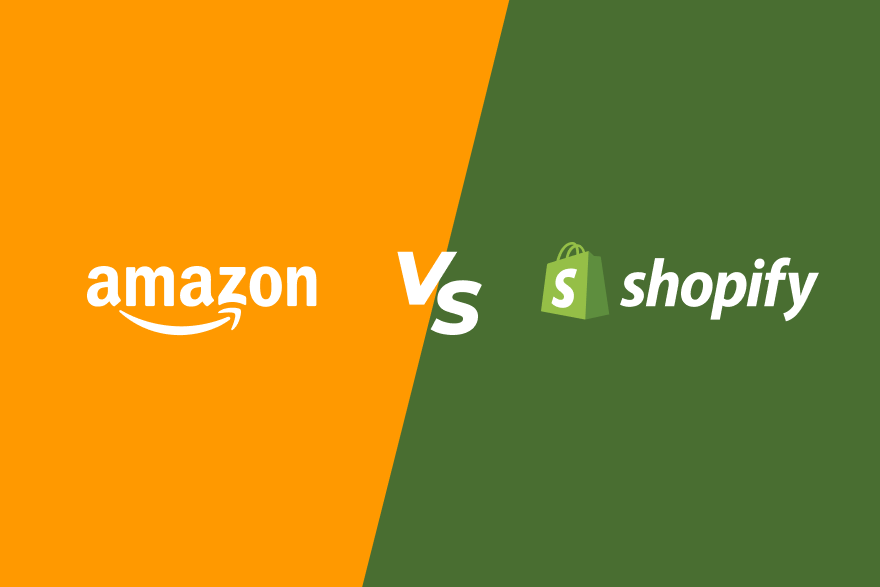
What Drew Me to Sell on Shopify and Amazon?
Embarking on my e-commerce journey, I was drawn to both Shopify and Amazon for their distinct benefits, each promising a unique path to achieving my entrepreneurial goals. My attraction to Shopify was rooted in the allure of creating a brand that was distinctly mine, inspired by stories of success like the one about earning big with digital downloads. Shopify offered the canvas I craved to paint my brand’s story, providing the tools to build an online presence from the ground up, exactly how I envisioned it.
On the flip side, Amazon beckoned with its vast marketplace, where the sheer volume of customers could turn any niche product into a best-seller overnight. The promise of tapping into Amazon’s enormous customer base without the need to build and drive traffic to my store was incredibly appealing. It seemed like the perfect platform for someone with a keen eye for market trends and a desire to capitalize on passive income opportunities, even as I slept.
My venture into Amazon was further motivated by the success stories I had encountered, where entrepreneurs effortlessly scaled their operations to levels I had only dreamed of. The idea of leveraging Amazon’s fulfillment services to streamline the logistics of selling and shipping products worldwide seemed too good to pass up.
Yet, the decision to embark on this dual-platform strategy wasn’t made lightly. It was the culmination of countless hours spent researching, calculating potential profits, and, most importantly, aligning each platform’s offerings with my long-term business goals. I was particularly inspired by the journey to making $10K a year selling photos online, a testament to the power of leveraging multiple platforms to maximize revenue streams.
In choosing Shopify and Amazon, I wasn’t just selecting e-commerce platforms; I was choosing the avenues that I believed would lead me to financial freedom and entrepreneurial success. Each platform offered a piece of the puzzle to achieving my dream: Shopify providing the foundation to build a unique brand and Amazon offering the exposure to catapult my products into the hands of millions.
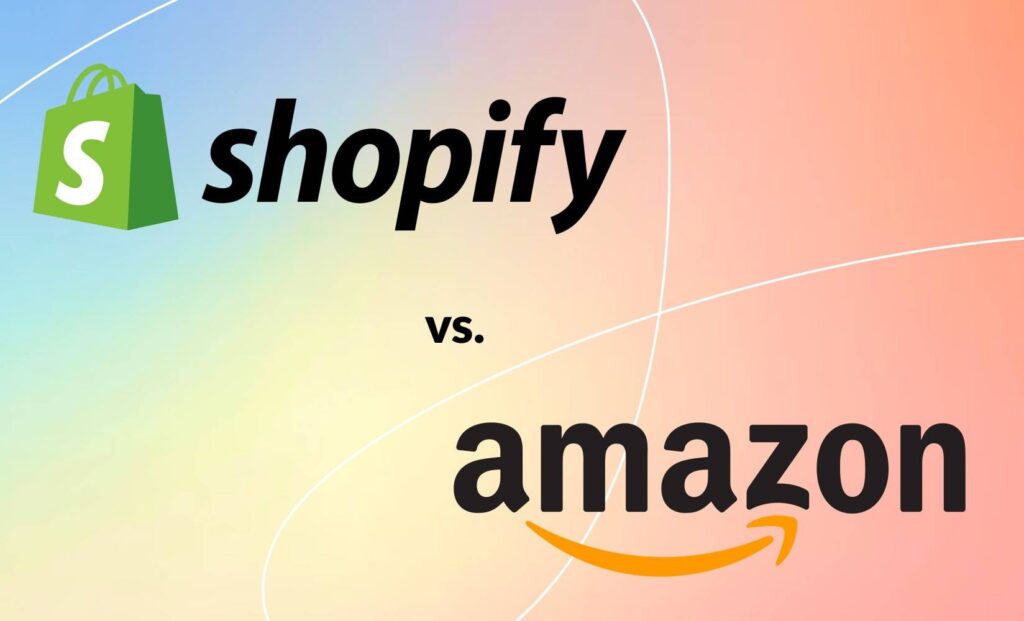
How Do Shopify and Amazon Fundamentally Differ?
Shopify: Your Personal Storefront
When I first dipped my toes into the digital selling waters, Shopify stood out as a beacon for brand individuality. Imagine having a blank canvas where every stroke of the brush is a decision you make—from the color palette of your website to the layout of your product pages. Shopify empowered me to craft a customer experience that was not just about selling products but about telling a story. This platform wasn’t just a shop; it was a digital extension of my brand’s identity, aesthetics, and values.
One of the standout features for me was the control over the customer journey. I could design marketing campaigns, email sequences, and personalized shopping experiences that aligned with my brand’s voice. This autonomy also extended to the backend operations, from setting shipping rates to handling taxes, giving me a comprehensive grasp over my business’s ins and outs.
Amazon: The Marketplace Giant
Conversely, selling on Amazon felt like setting up shop in a bustling city marketplace. The platform offered an unparalleled customer base, ready and waiting to discover my products. Here, it wasn’t about creating a brand from scratch but rather about positioning my products to stand out in a sea of competition. Amazon’s built-in traffic and sophisticated search algorithms meant that with the right product and optimization strategies, visibility was almost guaranteed.
However, this vast exposure came with its set of limitations, especially in terms of branding. My products were displayed alongside countless others, with limited opportunities for customization. The focus was primarily on product listings and customer reviews, with Amazon tightly controlling the buying experience. While this ensured a consistent and reliable experience for customers, it left little room for brand storytelling.
The Deciding Factors
Choosing between Shopify and Amazon came down to what I valued more: the freedom to build and control my brand or the opportunity to tap into a massive customer base with less emphasis on individuality. It was a decision between being a big fish in my own pond versus competing in the ocean that is Amazon.
In the end, I found that each platform served different aspects of my business goals. Shopify allowed me to build a loyal customer base attracted to my brand’s unique story and values, while Amazon enabled me to scale my sales through its vast marketplace. The choice wasn’t so much about one being better than the other but rather about how each could serve different facets of my e-commerce aspirations.
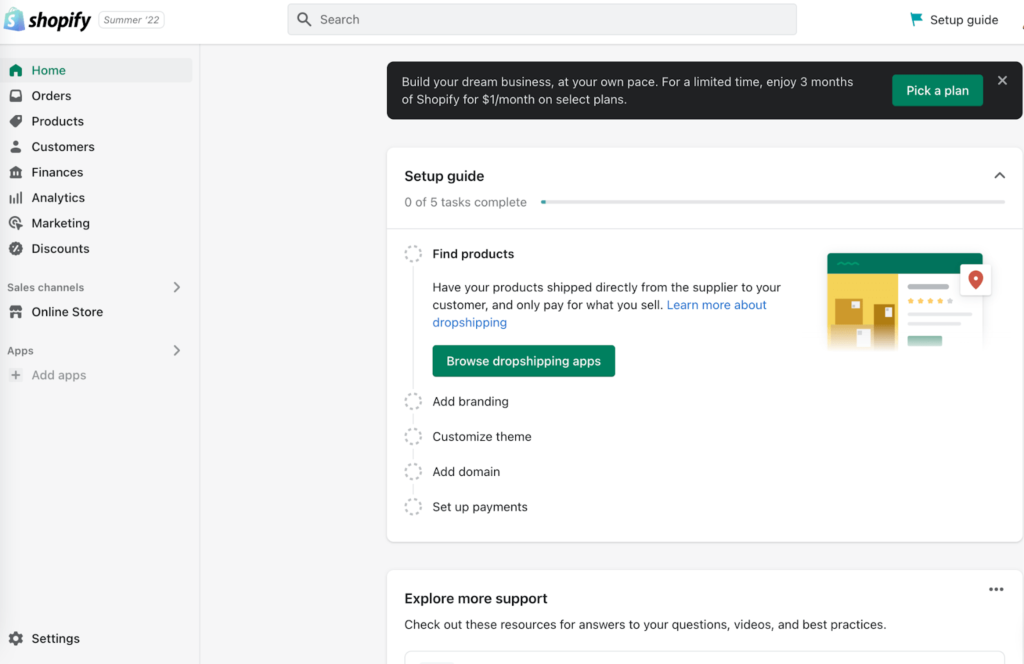
What Are the Perks of Setting Up Shop on Shopify?
Customization and Brand Control
One of Shopify’s greatest perks is the level of customization it offers. From the get-go, I was able to mold my online presence to exactly match my brand’s ethos. Whether it’s through bespoke website themes or the integration of various apps, Shopify provided me with a toolbox to create not just a store, but a brand experience. This level of control extends beyond aesthetics; it allowed me to fine-tune every aspect of my business, from marketing strategies to customer service workflows.
Direct Customer Relationships
Unlike the marketplace model, Shopify gave me direct access to my customers. This meant I could engage with them on my terms, build lasting relationships, and gather valuable insights without intermediary barriers. Such direct interactions were crucial in developing a loyal customer base and in making informed decisions to grow my business. It’s a platform that, while facilitating sales, places equal importance on building a brand and nurturing customer loyalty.
Independence and Growth Potential
With Shopify, I felt like I was building an empire, not just running a store. The platform’s scalability meant that as my business grew, Shopify’s services and features could grow alongside it. From launching digital products to integrating advanced analytics, Shopify was a partner in my business’s evolution, providing the resources needed for expansion at every stage.
And the Flip Side: What Challenges Does Shopify Present?
Generating Traffic
The autonomy of Shopify comes with the responsibility of driving your own traffic. Unlike Amazon’s built-in customer base, I had to invest significant effort and resources into marketing and SEO to attract customers to my store. Learning about SEO mistakes to avoid was part of this journey, requiring a strategic approach to visibility.
Handling Logistics
Without the streamlined logistics system Amazon offers through FBA, managing inventory and fulfillment on Shopify was initially a challenge. It required setting up a reliable logistics framework, from selecting couriers to managing stock levels, ensuring that the backend operations could support the customer experience I aimed to provide.
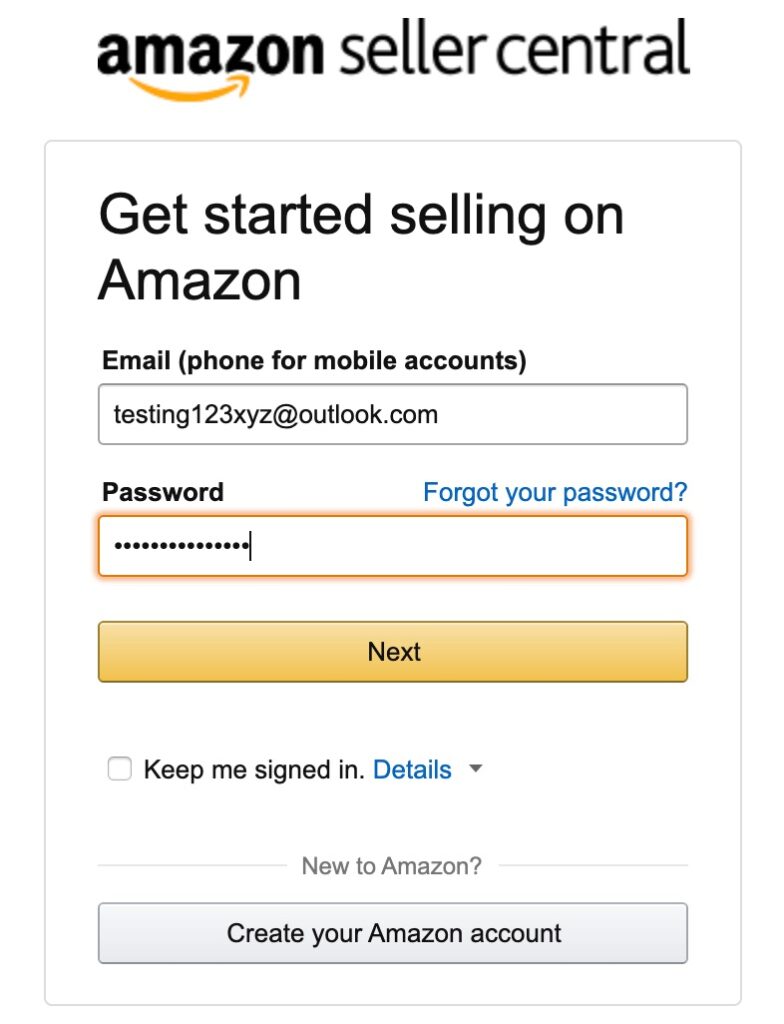
Switching Gears: What Makes Amazon an Attractive Marketplace for Sellers?
Customer Reach
Amazon’s vast global marketplace offered immediate access to millions of potential customers. This massive reach was a game-changer, significantly shortening the path to scaling my business. The sheer volume of traffic on Amazon meant that with the right product and optimization, visibility was virtually guaranteed.
Fulfillment by Amazon (FBA)
The convenience of Amazon FBA allowed me to focus on scaling my business rather than getting bogged down with the intricacies of order fulfillment. This service not only took care of storage and shipping but also managed returns, providing a seamless experience for both me and my customers.
In navigating the complexities of both Shopify and Amazon, I learned that each platform offers unique advantages that, when leveraged effectively, can lead to significant growth and success in the e-commerce space. It’s about finding the right balance and using each platform’s strengths to your advantage.
But What About Amazon’s Downsides?
Intense Competition
On Amazon, the competition is fierce. My products were up against thousands of others, some from sellers with deeper pockets for advertising and lower prices. Navigating this marketplace meant constantly optimizing listings and keeping a keen eye on competitors, a challenge that sometimes felt like a full-time job in itself.
Limited Branding Opportunities
While Amazon brought my products to a vast audience, I often felt like just another seller in their ecosystem. The opportunities to differentiate my brand were limited. Unlike my Shopify experience, where I could craft a unique brand story, Amazon’s structure focused more on the products than the sellers behind them. This environment made it challenging to build long-term customer loyalty or a distinctive brand presence.
Fee Structure
Navigating Amazon’s complex fee structure was another hurdle. Between listing fees, FBA charges, and other costs, my profit margins were under constant pressure. Understanding these expenses was crucial to maintaining profitability, especially when compared to the more straightforward costs associated with running a Shopify store.

How Have My Sales Compared on Shopify vs Amazon?
Balancing sales on both platforms revealed some stark contrasts and unexpected insights. On Amazon, the sheer volume of customers and the power of Prime meant that sales could skyrocket with the right product at the right time. However, these peaks often came with increased competition and fees, which ate into profits.
On Shopify, building my brand took time and significant marketing effort. Yet, the sales I made were more profitable on a per-item basis, thanks to lower fees and the ability to command higher prices. More importantly, customers who bought from my Shopify store were more likely to return, attracted by the brand and shopping experience I offered.
Leveraging insights from boosting Etsy sales through photo and SEO tips, I applied similar strategies to both platforms, tailoring my approach to fit the unique dynamics of Amazon and Shopify. The result? A balanced e-commerce strategy that maximized exposure on Amazon while building a loyal customer base on Shopify.
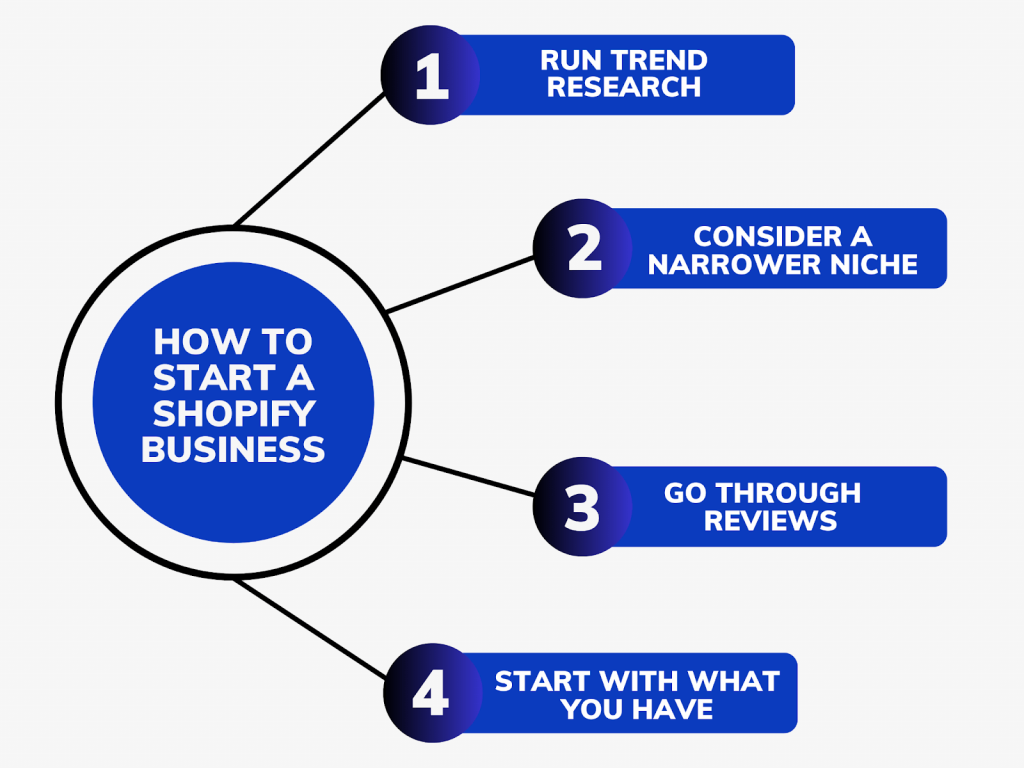
Can You Juggle Both Platforms for Maximum Gain?
Yes, it’s entirely possible to harness the strengths of both Shopify and Amazon, but it requires a well-thought-out strategy and a willingness to adapt. Using Amazon for its vast reach and FBA’s convenience, alongside Shopify for brand building and direct customer relationships, can provide a diversified income stream.
Success involves continuous learning and adapting, from avoiding common Etsy SEO mistakes that also apply to Amazon, to embracing the principles of financial freedom in managing the profits and reinvestments into both platforms.
In conclusion, there’s no one-size-fits-all answer to selling on Shopify versus Amazon. It’s about leveraging each platform’s benefits to fit your business model, goals, and lifestyle. For me, the journey has been about finding that perfect balance, a task that requires patience, resilience, and a keen eye for opportunities.



